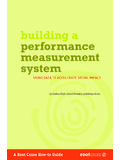Transcription of SOCIAL ISSUE REPORT WORKFORCE DEVELOPMENT
1 SOCIAL ISSUE REPORT : MARCH 2011 | 1 WORKFORCE DEVELOPMENTSOCIAL ISSUE REPORTECONOMIC EMPOWERMENTDEFINITIONW orkforce DEVELOPMENT is the field dedicated to preparing low-skilled workers to gain and retain employment in industries that provide opportunities for advancement but do not require a postsecondary degree. This REPORT focuses on job training for adults facing multiple barriers to employment, including but not limited to lack of work experience, past criminal record, and ISSUE REPORT SUMMARYI nvestment in job training programs that aim to improve the employment status of low-skilled workers presents a significant opportunity for impact: High unemployment has significantly increased competition for jobs that lower-skilled workers have historically filled. Additional training is critical to enable low-skilled workers facing multiple barriers to employment to compete for jobs in today s economy. For more on why WORKFORCE DEVELOPMENT matters, see page 2.
2 High-performing programs prepare participants for high-demand positions through technical training, employment preparation and placement, and SOCIAL services. For more on approaches to WORKFORCE DEVELOPMENT , see page 3. Economic costs due to unemployment could be reduced and recuperated over time, with studies showing a SOCIAL return on investment as high as $ per dollar invested in high-performing For more on investment, see page : WORKFORCE DEVELOPMENT IN THE UNITED STATESN umber of unemployed adults in the funds spent on WORKFORCE -related activities4% of welfare funds spent on WORKFORCE - related activities allocated to education and training activities5, millionJanuary 2011$ billionFiscal Year 200913%Fiscal Year 2009 SOCIAL ISSUE INDICATORSS ocial Impact Research (SIR) identified two indicators to assess the short- and long-term progress towards helping adults facing multiple barriers to employment obtain and retain jobs with opportunities for advancement.
3 Unemployment in Poverty Rate refers to the unemployment rate among adults living below the poverty line. Welfare Qualifying refers to the number of adults who are qualified to receive Temporary Assistance for Needy Families (TANF) benefits, more widely known as welfare. Because eligibility criteria regarding factors such as income level, family assets ( , car, home), marital status, and age vary by state, aggregate data are not available for this indicator; SIR therefore uses the number of TANF recipients as the best available indication of the number of individuals who are eligible for the program nationally. SIR reports are a resource to help donors learn about a variety of SOCIAL issues affecting at-risk populations and identify high-performing organizations that are addressing those issues. SIR believes that rigorous information on a targeted SOCIAL ISSUE provides the best starting point for measuring nonprofit performance. Drawing on current research, SIR s reports analyze a SOCIAL ISSUE to provide donors with a recommended approach and criteria for evaluating nonprofits based on that approach.
4 The reports also provide our own list of recommended high-performing TO USE THIS REPORTU nemploymentUnderemploymentBottom Decile31% Decile3% in lower income deciles are significantly more affected by unemployment and 2009 Unemployment in Poverty Rate7 Welfare Recipients (in Millions) ISSUE REPORT : MARCH 2011 | 2 INCREASED COMPETITION FOR LOW- AND MIDDLE-SKILLED WORKERSIn 2010, unemployment in the United States hovered around This high unemployment rate has created increased competition, especially for jobs that require fewer specialized skills. The current labor environment presents a particularly grim picture for low-skilled workers who are now competing with higher-skilled workers for the same jobs; the Facts section earlier in this REPORT highlights some outcomes of this increased competition in terms of unemployment and underemployment. Opportunities for low-skilled workers to obtain employment that would help them move out of the bottom income deciles are scarce.
5 To compete for jobs in today s labor market, low-skilled workers need the additional preparation and training required for stable jobs in high-demand industries and functions. These high-demand positions provide the opportunities for advancement, benefits, and family-supporting wages that temporary placements cannot, and workers ability to compete for these jobs is a critical factor in their ability to rise out of poverty. Moreover, many WORKFORCE DEVELOPMENT studies have argued that middle-skills jobs those that require less than a Bachelor s degree, but some specialized postsecondary training will grow faster than the population that is qualified to fill those jobs over the coming decades. As seen in Figure 1 below, nearly half of all job openings by 2014 are expected to require middle Thus, training for low-skilled workers not only enables them to compete for scarce jobs today, but also prepares them to benefit from this anticipated opportunity in the ISSUE OVERVIEW: WHY WORKFORCE DEVELOPMENT MATTERSFIGURE 2: CRITICAL BARRIERS TO EMPLOYMENT Lack of credentials and work experience Lack of childcare and/or transportation Lack of English proficiency Past criminal record Multi-generational poverty Individual and family health problems Mental health issues Homelessness and housing instability Substance abuse DiscriminationFIGURE 1.
6 PROJECTED JOB OPENINGS BY SKILL LEVEL BETWEEN 2004-201422%Low Skills Jobs45%Middle Skills Jobs33%High Skills JobsBARRIERS TO EMPLOYMENTW hile government investment in WORKFORCE -related activities has increased since TANF began in 1996, it maintains a work first mentality that rewards rapid job placement rather than longer-term skill-building. This has led to most funding being directed to temporary and subsidized jobs, rather than to the types of programs that have proven to be the most effective in helping adults with multiple barriers to employment gain and retain jobs with opportunities for addition to the lack of relevant skills for high-demand job opportunities, a number of other barriers further impact an individual s employment prospects. Figure 2 shows some of the barriers to employment that are most commonly cited in research on WORKFORCE DEVELOPMENT . While the lack of credentials or work experience is a barrier that is clearly related to WORKFORCE DEVELOPMENT , other personal barriers may be less obvious.
7 For example, rehabilitated individuals with a past criminal record still face enormous legal hurdles to obtaining employment in a number of industries. Racial discrimination also creates a significant barrier to entry, with multiple studies showing that Hispanic and African American candidates receive fewer invitations to interview and, ultimately, fewer job offers than white ,12 Furthermore, homelessness and housing instability create logistical barriers to job retention or even training program ISSUE REPORT : MARCH 2011 | 3 APPROACHES TO WORKFORCE DEVELOPMENTSIR s research showed that the industry-focused approach is most effective in helping individuals facing multiple barriers to employment gain and retain stable jobs. Additionally, high-performing programs have three essential program components that comprise effective job training programs that provide relevant skills. High-performing initiatives incorporate technical training and education, employment preparation and placement services, and complementary SOCIAL services in order to provide participants with foundational knowledge, skills, abilities, and personal resources for employment success.
8 Technical Training and Education provides participants with concrete skills to improve their eligibility for employment in a particular industry. Effective job training programs provide a comprehensive occupation-driven curriculum that includes practical application of skills learned, pre-graduation internships and work opportunities, and training to obtain licenses or certifications required for employment. These programs maintain strong ties with the industry on which they focus and involve employers in program design to ensure participants are equipped with skills that will be valuable in the labor market. Furthermore, many training programs have solidified partnerships with community colleges to enable participants to simultaneously earn college credit and train for a high-demand job. Employment Preparation and Placement Services aims at improving participants understanding of and ability to meet employer expectations regarding professionalism, their effectiveness in preparing resumes and cover letters and interviewing, and their preparedness to address workplace topics such as advancement and salary negotiation.
9 Furthermore, placement refers to the resources and systems that are in place within the program to help participants identify and apply to potential job opportunities. Complementary SOCIAL Services connect participants to the comprehensive SOCIAL services that help them address and overcome their individual barriers to employment ( , childcare, transportation, housing stability, substance abuse). Effective programs have a dedicated staff member who works individually with participants to develop a support plan and who refers participants to partner organizations or other internal services, as addition to the three core components above, SIR considers an organization s activities aimed at advancing the field of WORKFORCE DEVELOPMENT and creating systemic change. Systemic change activities that investors might look for in direct-service WORKFORCE DEVELOPMENT organizations include: working with employers to remove barriers to employment for the most vulnerable populations; advocating on behalf of populations with particularly high barriers to employment ( , individuals with a criminal record); providing employers with technical assistance, such as incumbent worker training; increasing public awareness of both the barriers that adults face and the most effective practices available in order to inform policy makers and other programs in the field.
10 Taking a leadership role on boards, committees, or professional associations working to advance the field of WORKFORCE OF HIGH-PERFORMING ORGANIZATIONSSIR conducted a comprehensive literature review of existing research and interviewed 12 ISSUE experts, including government officials, academics, practitioners, and funders to determine the best approaches for improving employment outcomes for adults facing multiple barriers to employment. Based on the information collected, SIR determined that industry-focused job training programs, described below, have the most promise for assisting low-skilled workers with multiple barriers to gain employment in high-demand industries that also enable them to become self-sustaining and progress along a career are many approaches to improving the employment prospects of populations facing multiple barriers, most of which focus only on one aspect of WORKFORCE preparedness or access. The primary approaches undertaken by nonprofits include: Soft skills and basic skills training: Many programs seek to equip participants with soft skills ( , communications, professionalism) and basic skills ( , ESOL, math) that are needed to succeed in the workplace.







